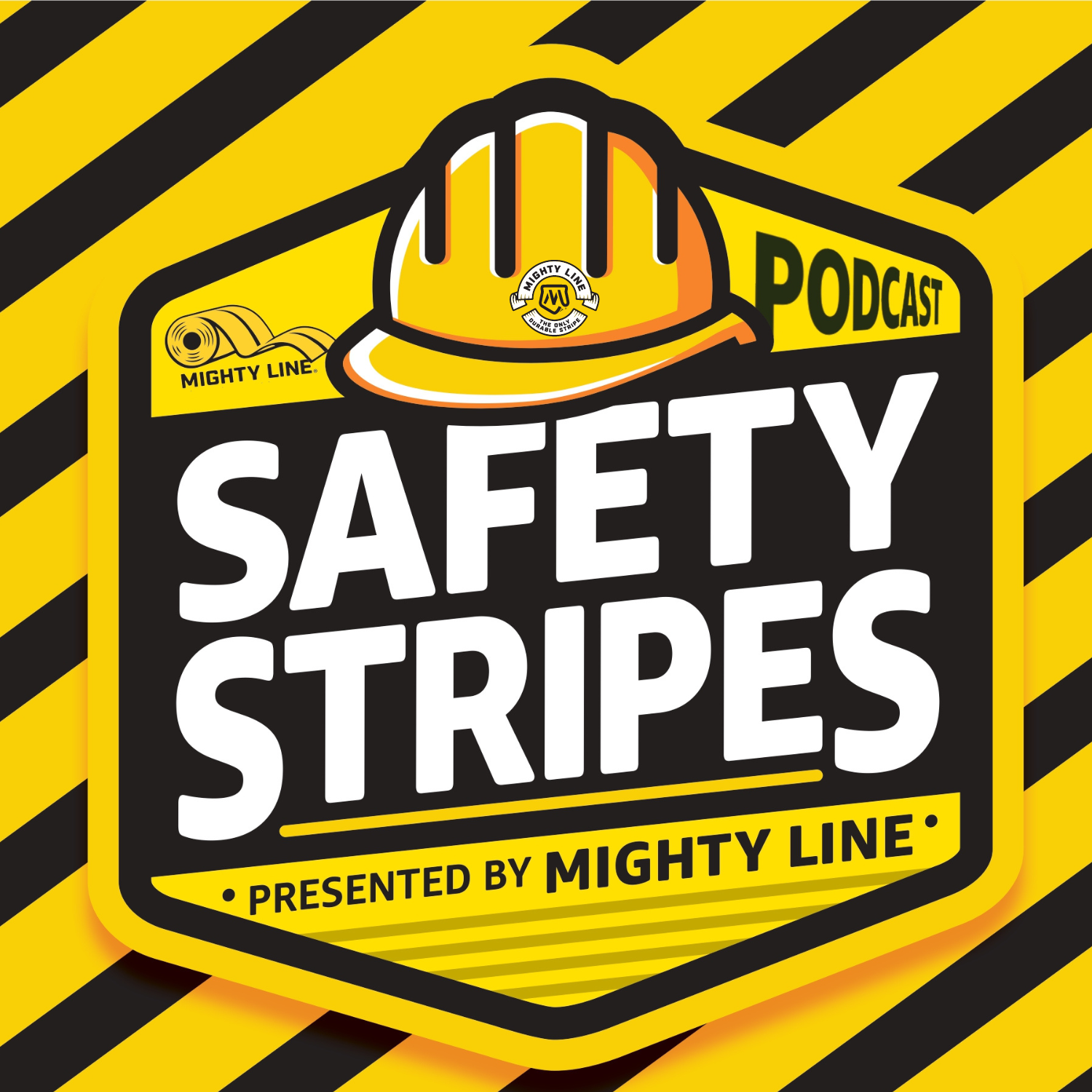
Mighty Line Minute with Dave Tabar - Talking Safety Codes & Standards, Music, and Business Innovation
The Mighty Line Minute podcast is part of the Safety Stripes Podcast Network, sponsored by Mighty Line floor tape and signs. Hosted by Dave Tabar, episodes air primarily on Mondays and deliver focused, engaging content on workplace safety, operations, and industrial best practices. In addition to safety standards such as OSHA, ANSI, NFPA, ISO, and others, the podcast explores the practical implications of regulatory compliance, risk management, and loss control. Occasional episodes feature unique topics — including music, entertainment, and innovations — “for the good of the order,” offering both insight and inspiration. Follow to stay informed and ahead in safety and beyond.
Another regular segment within the Safety Stripes Network is Warehouse Safety Tips, hosted by Wes Wyatt every Wednesday. These episodes offer practical safety advice and insights tailored to warehouse environments, covering topics such as hearing conservation, proper use of personal protective equipment (PPE), and more.
Both segments of the podcast network are highly practical, offering listeners strategies, expert interviews, and case studies to enhance safety across various work environments. They also align closely with Mighty Line’s product offerings, highlighting the critical role of high-quality safety markings—such as Mighty Line floor tape—in preventing accidents and supporting efficient operations. For more safety tips and toolbox topics related to floor tape, visit Mighty Line’s official blog. You can also request free samples of floor tape and floor signs there.
Mighty Line Minute with Dave Tabar - Talking Safety Codes & Standards, Music, and Business Innovation
Is OSHA Really Necessary?
View all Mighty Line Safety Talk Blogs and Podcasts
Learn more about Mighty Line floor tape and Mighty Line Floor Signs
Request free floor tape samples * No Risk and Free To Try
All Mighty Line Minute Floor Tape Blogs
OSHA, the Occupational Safety and Health Administration, exists in the USA to ensure that workers are provided with safe and healthy working conditions. Prior to OSHA, workplace injuries, illnesses, and deaths were far more common. It was a time when workplace hazards were a grim reality. Factories, construction sites, and other workplaces could operate with unguarded machinery, chemical exposures, and near-zero accountability for those employers who chose to cut corners. After all, other than workers' compensation scheduled payments for those who were injured or killed, it wasn't easy to prioritize worker safety over profits when the competition had no safety requirements.
In 1969, the groundwork for a new federal agency was laid out by Congress to create and enforce workplace safety and health standards. The legislation was quickly signed into law by President Nixon on December 29, 1970. Six months later, on April 28, 1971, employers were required to implement the new regulations. Some 50 years later, April 28th remains dedicated to remembering workers who have been injured, died, or have been made ill during work. The date serves as a reminder of the ongoing need for worker and workplace safety and health.
Many of OSHA's rules include a great deal of specificity. However, one provision, best known as the "General Duty Clause" in Section 5(a)(1) of the Act, states:
"Each employer shall furnish to each of his employees employment and a place of employment which are free from recognized hazards that are causing or are likely to cause death or serious physical harm to his employees."
So, while today it may be fashionable to challenge over-regulation, just remember that all civilized countries in the world have developed safety and health standards to ensure that employees are safe at work. There will always be a need for safety and health standards and regulations, so that every employer is assured to be operating in a safe, albeit competitive, environment. And yes, that helps assure a level playing field with your competitors - which is beyond the more important issue of assuring your employees' safety and health.
Is it right to question certain safety and health regulations? Certainly! It took over 40 years for OSHA to finally consider updating their 1910.106 Flammable and Combustible Liquids requirements, which were based upon an outdated 1969 NFPA Fire Code. Even then, it took the European Union’s efforts through Global Harmonization to force OSHA to act. And yes, even today, many would still call that section of the OSHA standard outdated.
If only we could ensure that safety and health standards around the world were developed consistently, and enforced to the same degree – but that would be an impossible task. Individual countries have the option to develop either more advanced, or less-prescriptive standards or regulations. And some of the most prominent global standards remain as simply advisory - unless adopted into regulation by a specific governmental agency.
However, as one large U.S. manufacturer once confirmed: “No matter where you operate in the world, a human life is a human life, and as an employer, we must uphold our safety and health standards to the highest level so that our employees go home safely to their families or loved ones every single day.”
Thanks for taking time with us today on Mighty Line Minute! And to help assure that your work environment is operating at its highest level of safety, be sure to head over to MightyLineTape.com. There you will find the latest information on the most recognized and durable safety striping and signage for use on warehouse and industrial floors. Their products offer heightened levels of safety that are certain to improve excellence in your facility's operations. That includes delineation of storage and commodities, 5S initiatives, and most importantly - the safety and health of employees.
Have a safe day!
Podcasts we love
Check out these other fine podcasts recommended by us, not an algorithm.

Safety Stripes by Mighty Line Floor Tape - The Best Workplace Safety podcast talking NFPA, EHS & Warehouse Safety Tips!
Wes Wyatt, Mighty Line Floor Tape
The Safety Pro Podcast
Blaine J. Hoffmann, MS OHSM
Stripe It Like It's Hot
Cam Roberts


